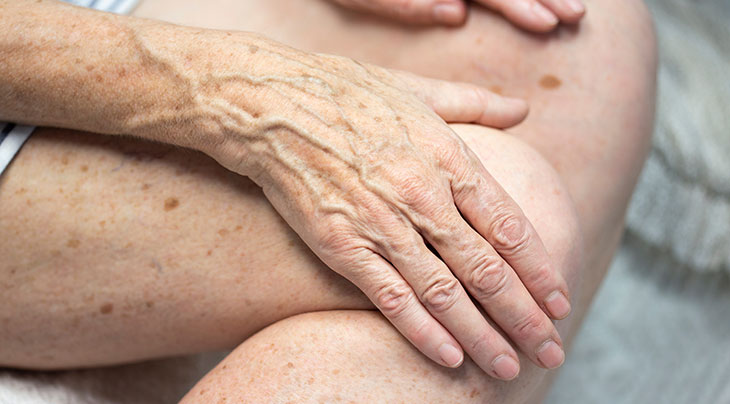
As we get older, age spots often start showing on our skin. Age spots are small, flat, darker areas that may show on skin that is exposed to the sun. Think shoulders, face and hands.
People can begin noticing age spots in their 30s and 40s. Even if you're responsible applying sunscreen, exposure to ultraviolet (UV) rays over time adds up. This can result in darker spots on your skin.
People with darker skin are less likely to develop age spots. But they're more likely to develop spots of hyperpigmentation (darker patches of skin).
The good news is there are some things you can do to reduce the age spots.
How can you prevent age spots?
Prevention is key to limiting early signs of age spots. Limiting UV exposure is the biggest way you can prevent age spots. And the more sun you get, the less you will be able to fade your age spots.
If you are going to be in the sun, make sure to wear broad-spectrum, tinted sunscreen every day. This can help prevent new age spots and protect current spots from getting darker.
Learn more about sunscreen, SPF and protecting your family
Can you get rid of age spots?
There are some things you can do to get rid of age spots. You can try at-home treatments, which can help dark spots go away after a few months. Or you can see a dermatologist for in-office treatments. In-office treatments for age spots may include chemical peels or laser therapy.
See the cosmetic dermatology treatments we offer
What are some at-home treatments for age spots?
Some dark spots can go away with the right treatments. There are several at-home treatments that can reduce the look of age spots, including:
Exfoliation
Skin cells regenerate about every month or so. Sun exposure and aging can slow down this process. Exfoliation can quickly remove dead skin cells and brighten your complexion.
Vitamin C serums
Vitamin C is an antioxidant that helps brighten skin and stimulates collagen production. This can help protect against things that might damage your skin, like the sun and other environment factors.
Skin brightening serums
These serums essentially bleach the age spot, causing it to fade over time. Dark spot correcting serums, with 2% hydroquinone, may be safe and effective when used correctly. They are available over the counter. People with darker skin are advised to not use these. Be careful because if they're used for long periods of time, they can cause damage to the skin.
Prescription topicals
For people of color, experts recommend topical creams prescribed by a dermatologist (a skin doctor). These can be applied every few weeks and can help fade hyperpigmentation.
Chemical peels
People with lighter skin tones can try at-home chemical peels. People of color are advised to use with caution. Chemical peels can lighten dark spots by peeling off the top layer of skin.
Check out our Specialty Clinic for Multicultural Dermatology
When should you see a health care provider about age spots?
If you want to try an at-home chemical peel or other treatment for age spots, talk to a health care provider or dermatologist first. People of color should be especially careful using any peels, though there are safe options for chemical peels for all skin types. A dermatologist can recommend safe and effective treatments for hyperpigmentation based on your skin type and diagnosis.
You should also see a dermatologist to make sure the dark spot is only cosmetic. A dermatologist can diagnose age spots with a visual exam. Age spots are harmless. However, if you have spots that grow quickly, look different from your other spots, or seem unusual, you should see a health care provider.
Learn the symptoms, risk factors and more of skin cancer
Read some more tips from UC Davis Health dermatologist Oma Agbai, as featured in InStyle magazine.
This blog was medical reviewed by Oma Agbai, M.D.




